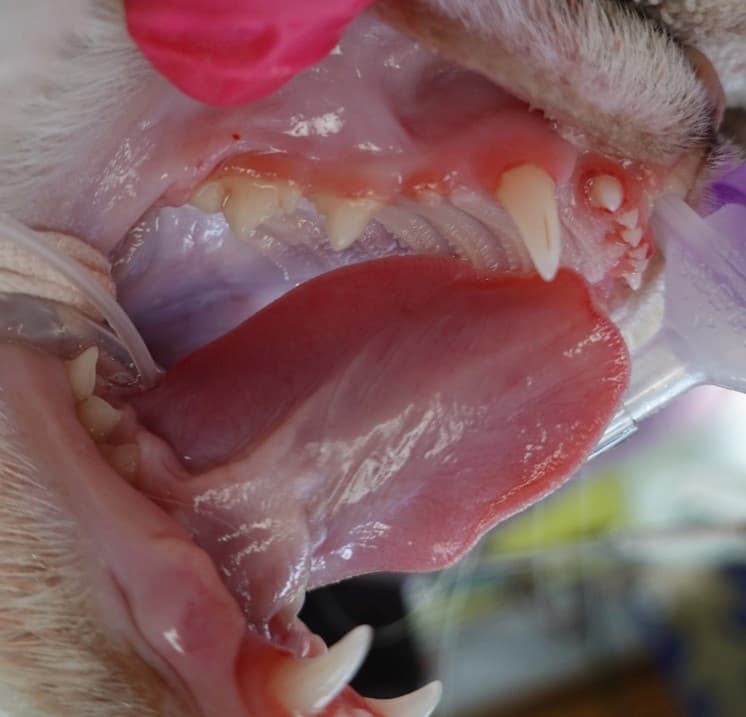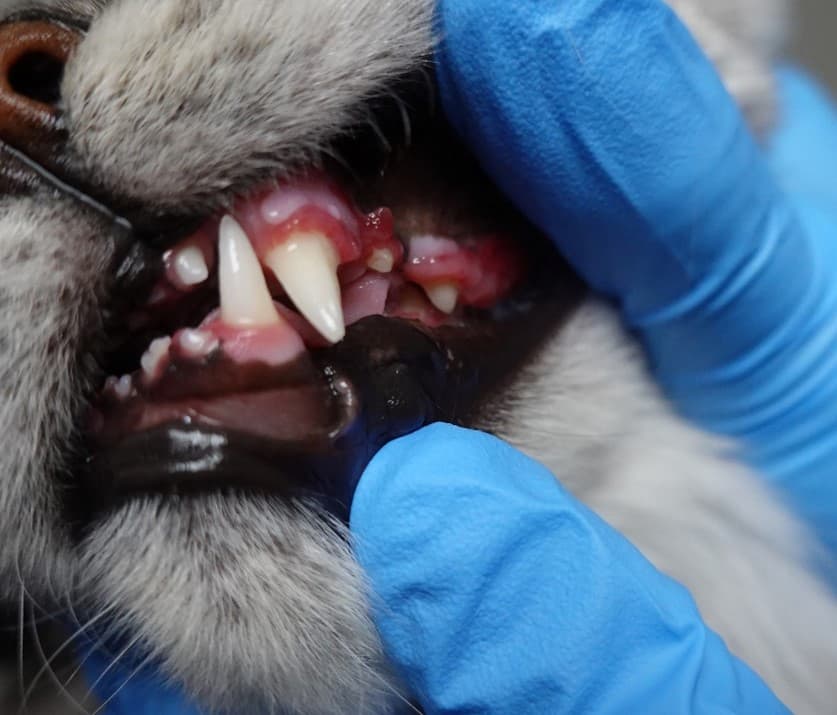
About Juvenile Gingivitis / Hyperplastic Gingivitis
Juvenile gingivitis (juvenile hyperplastic gingivitis) refers to gingival inflammation that occurs following the eruption of the permanent teeth. This condition is most frequently observed in cats, with oriental breeds being overrepresented.
Patients suffering from juvenile gingivitis have redness, swelling and inflammation of their gum tissue (gingiva). The cause of this disease is not known, but an exaggerated inflammatory response to tooth eruption, immune-mediated exposure (FIV, FeLV, Calicivirus), and viral exposure (FIV, FeLV, Calicivirus) have all been proposed as triggers. Many authors believe it is likely a multifactorial response.
About Juvenile Periodontitis
Juvenile periodontitis is another painful syndrome seen in young feline patients. Not only is there significant gingivitis but associated periodontal attachment loss. Patients generally present with intense gingivitis and bleeding gums, abundant plaque deposits and loss of the support structures surrounding the tooth, including the surrounding bone and periodontal ligament.
Juvenile periodontitis appears to be an immune-based problem. There appears to be an overreaction towards plaque build-up, which causes severe and quickly advancing periodontal disease in young cats. There is once again a predisposition in oriental breeds of cats, although all breeds may be affected.

Management
The approach to these cats with both juvenile gingivitis and juvenile periodontitis is similar. To have any chance of halting and controlling these conditions, aggressive and early intervention is required. If left untreated, they will rapidly progress to severe periodontal disease.
It is generally accepted that the susceptibility of patients to develop this condition (juvenile periodontitis) will often subside by two years of age.
Dental prophylaxis as frequently as every 3 months, removal of any overgrown/hyperplastic gingiva, and a home care regime revolving around strict plaque control is required. To be effective, home care must include daily tooth brushing to mechanically remove plaque deposits from the teeth. Oral rinses containing Chlorhexidine may also be utilized to reduce the oral bacterial load further.
The patient’s initial response to therapy will often provide a good long-term prognostic indicator. If the patient fails to respond at least partially to initial aggressive therapy, the long-term prognosis for resolution is poor. Failure to provide this therapy or failure of a patient to respond despite this treatment increases the likelihood of the patient developing severe periodontitis. Patients who fail to respond to this form of management or progress despite treatment may require partial to full mouth extractions.
For many cats presenting with juvenile periodontitis, caudal to full-mouth extractions are required. This may be due to the level of periodontal disease detected at the time of presentation or the difficulty in providing the level of home care and regular professional intervention required to attempt to halt or slow the progression of the disease process. Even with excellent home care and regular professional treatment, many cats will still require numerous extractions.
With good home care and regular treatment, some cats appear to outgrow the condition by 2-3 years of age.
Patients who undergo extensive extractions do very well and generally experience full resolution of their oral inflammation and improvement in their quality of life.
Call (218) 461-4825 or book online to schedule your pet’s advanced dental appointment.

